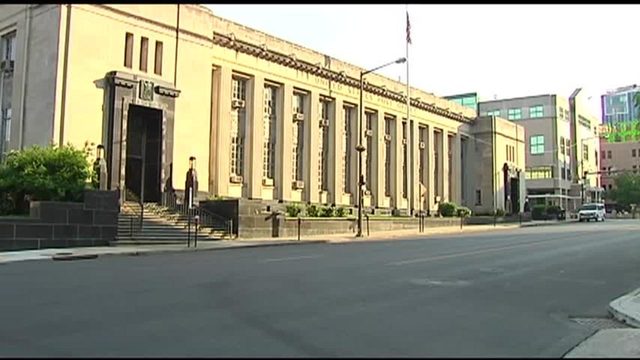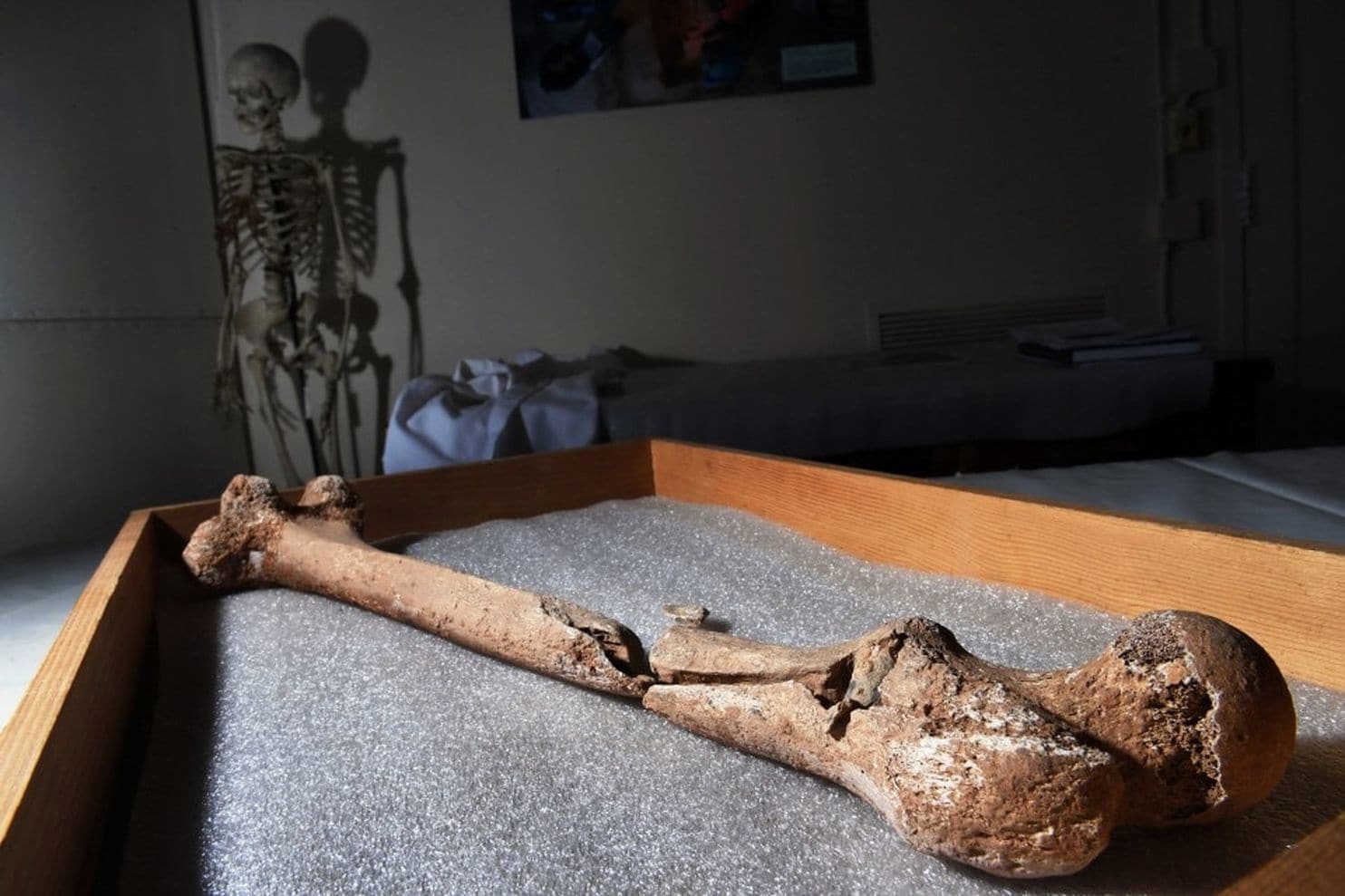History's Headlines: The last letter
By: Frank Whelan
Posted: Jun 23, 2018
on WFMZ.com
(Webmaster note: This Historical Reflection upon the news that the Allentown Post Office Building is to be closed and replaced was written by Frank Whelan, a Board Member of the CWRT of Eastern PA and is one of a series which Frank pens for WMFZ.)
Sometimes it seems things at the Allentown Post Office haven’t changed at all. Long lines of customers waiting to send out letters and packages snake across the lobby floor. People come in to check their post office boxes. And occasionally a stamp collector will arrive to ask about the latest issue. But most of the time there is quiet. Back behind the polite, friendly clerks, and the usually one, two or three occupied counter spaces, there are only a few people moving. Truckloads of mail and the carriers are elsewhere in a facility out on the highways and near the airport, something no one could have imagined when most mail moved by rail and the building was new.
August 30, 1934 was a cool day for the season, in fact so cool the weatherman called it the coolest it had ever been recorded on that day. At 1 o’clock it was 56 degrees, sunny and cloudless, and must have been welcomed by the crowd of several thousand that gathered at 5th and Hamilton Streets at that hour to witness the dedication of the new Allentown Post Office. Although the dedication of post offices was usually left to minor level officials, the featured speaker that day was James A. Farley, Postmaster General of the United States, and a close personal and political friend of President Franklin Delano Roosevelt. Farley, who would later guide FDR to a landslide victory in 1936 (mocking the election results that showed only Maine and Vermont in the Republican column, he turned the old saying “As Maine Goes So Goes the Nation” on its head by quipping, “As Maine goes so goes Vermont”), must have found himself in strange company, sharing the platform with the city’s Republican mayor Fred Lewis. But perhaps not. Lewis had been a Progressive Republican in the Teddy Roosevelt mold. And with the region, as was the rest of the country in the Great Depression, any aid by the government in providing jobs for local workers was welcome.
The idea for a new post office building for the city had been on the drawing board as early as 1925. Allentown had gotten its first government-built post office in 1907, a red bricked and pillared structure located at the northwest corner of 6th and Turner Streets. Many thought it was too small and the location was all wrong. Hamilton Street was the city’s main street, so sticking it at 6th and Turner was almost an insult.
The lot at the southeast corner of 5th and Hamilton was empty. Originally it had been the site of the Greenleaf mansion, home of Anne Penn Allen Greenleaf and James Greenleaf. Anne Penn Allen Greenleaf was the daughter of James Allen, the third son of Allentown founder William Allen. At their deaths in the 1850s it was divided into two homes by Charles Seagraves. By 1905 it was turned into a Victorian home by his son James Seagraves, who owned the American Hotel, predecessor to the Americus. At his death in 1907 his widow Ida Wolf Seagraves tried to tell the house but apparently found no takers and circa 1911 it was torn down. A hotel was planned for the site, but nothing ever came of it. It was delayed for so long that the “new hotel” became the butt of community humor.
By 1929 the corner was occupied by a well-maintained billboard bordered by flowers and erected by John Henry Leh to encourage local folks to subscribe funds for the construction of the Allentown Airport, ancestor of Lehigh Valley International Airport. Exactly when the site was picked for a post office is not exactly clear, but it may have been around that time. With the arrival of the Great Depression in the 1930s, the concept of a new Post Office went from being a good idea when we get around to it to an urgent community issue. The Hoover administration, under siege for not doing enough to help the unemployed, seized on the idea that was on the drawing board and in 1931 ground was broken for the new building.
The architects chosen for the project were Jacoby & Everett. The Jacoby was Lewis Jacoby, who was among Allentown’s first architects, starting his firm in the 1870s. But he had died in March of 1929 and the project was taken over by his partner Herbert F. Everett. A newspaper article from October 27, 1934 described the firm’s tasks this way:
Herbert F. Everett, who is in charge of administration and design, has spent most of the period since the firm was asked to prepare the design upon the work and had the capable assistance throughout of Robert E. Ochs, his chief of staff in the details of the design. Warren H. Oswald was in charge of the specifications supervision and Paul T. Frankenfield, of the mechanical and electrical features of the building.
The inspiration for the design, the Morning Call said, was a modernized version of the Parthenon influenced by the spirit of ancient Greece. Today it is known as Art Deco or Art Moderne. The entrances bear stylized owls, a symbol of the goddess Athena, to whom the Parthenon was dedicated. The press particularly pointed out the use of Indiana limestone in the façade and the black granite in the foundation and around the entrances. They paid attention to the art work in the lobby, particularly the allegory in the decorative plaster frieze that shows the development of the postal system from the horse to the dirigible. “The decorative scheme was done by Amedeo Arbissoni who is employed by Jacoby and Everett,” noted the Morning Call. The tiles in the lobby floor were pointed out as having “geometric designs,” but apparently no mention was made of the swastika design on the floor installed by the Allentown Marble and Tile Works. Not much of a fuss was made about them until October 4, 1965 when Dagmar Arja, a citizen of Berlin married to an Allentown man, saw them and was horrified. On November 11, 1965 Allentown Tile Works employees came in and removed the five that closely resemble the emblem used by Nazi Germany. The rest, assumed to be Indian good luck signs, remained.
Although ground was broken in 1931 it was not until October 3, 1932 that construction began. Earlier that August Everett had said the government was trying to use only Allentown and Lehigh County men for the work. Completion date was set for December of 1933. But there were delays in starting construction and bad weather. An accident occurred in September of 1933 when the concrete was being poured. Twenty-nine year old Charles Demico was injured when one of the forms supporting the roof concrete gave way.
During the building’s construction the biggest change was the election of 1932 that brought in the Democrats. Clearly, they wanted to show that they were doing all they could to help the unemployed and the Allentown Post Office was something that was right at hand that they could point to. This may be why they sent out Farley, chairman of the Democratic National Campaign Committee, to give it a high profile. Farley arrived by train about 11 am and was taken to a luncheon at the Americus. Shortly before 1 pm all but eight of the city’s 148 postal employees escorted Farley to the grandstand from which he would speak. Introduced by a local congressman, Farley took the opportunity to laud FDR’S New Deal programs and what they were doing to give the unemployed work. He also had a great time having fun at the expense of Republicans.
Perhaps the best part of his address was his detailed account of postal service locally going back to couriers in colonial times. He mentioned a post road that went from Brick Meeting House in Rising Sun, Maryland through Allentown to Pittston Pa. Farley noted that regular U.S. postal service in Allentown began on January 1, 1803 under postmaster George Savitz,, that in the late 1840s Lehigh County had a female postmaster, Maria Hornbeck, who served from 1849 to 1862, and that home delivery of mail came to Allentown on October 1, 1882.
At the end of his speech a car arrived to whisk Farley off to a post office dedication in Wilkes-Barre. In 1940 he would break with Roosevelt when he decided to run for a third term. Farley claimed he just felt it was wrong for Roosevelt to try to do what no other president had done before.
Some, mostly Roosevelt supporters, said it had a lot to do with Farley wanting to run for the office himself in 1940. “Jim made the mistake of thinking that the applause he got, which greeted him at a new post office, was applause for him personally,” wrote FDR’s long-time secretary Grace Tully.
The next artistic contribution to the Post Office came in 1937 when architect Ochs suggested that some historic murals might liven up the lobby and teach a local history lesson. The government sent muralists Gifford Reynolds Beal. After talking to local historians, he picked subjects from the past that included the First Defenders, Trout Hall and Zion’s Church receiving the Liberty Bell.
Today the Allentown Post Office’s past is known. What will become of it and postal service in Allentown is for the future to decide.
http://www.wfmz.com/features/historys-headlines/history-s-headlines-the-last-letter/756513693












